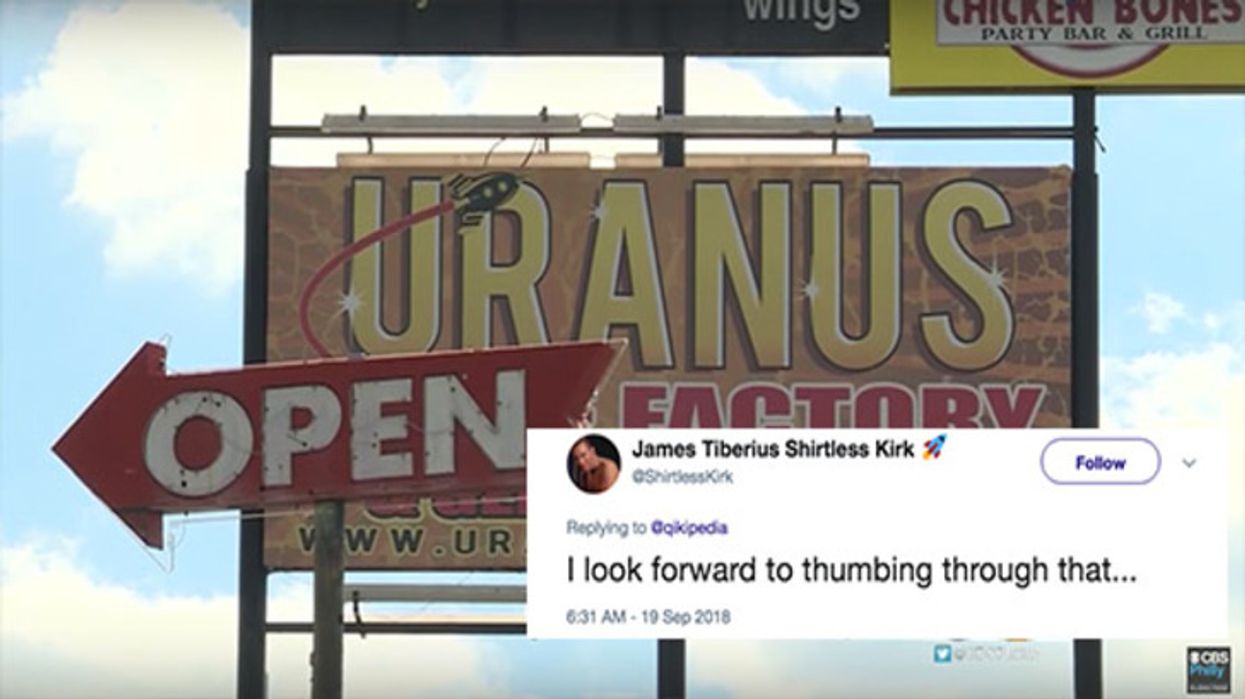November, 2002, LOS ANGELES - There is a warm and gracious Japanese custom called "omiyage." It could translate as both "gift giving" and "memento offering." When one is a guest, it is, of course, appropriate to take a gift to your host. "Omiyage" can also be a special memento of a wonderful place that one has visited which is given to a friend back home. I had an unforgettable two-week visit to Japan in October and the memories of that experience I would like to make my "omiyage" to the readers of this column.
 The Japanese American National Museum has had one of its exhibits touring the southern parts of Japan for the past two years. In October, the exhibit opened in the northern prefecture of Niigata. I participated in the opening ceremony as the chairman of the museum. One of the wonderful "omiyage" that I've come to look forward to on these occasions is the gathering of Japanese Star Trek fans that I've met on previous exhibit opening trips, as well as at many Star Trek conventions in the U.S. As I looked over a sea of formally dressed guests gathered for the ribbon-cutting opening, I could recognize many familiar faces of fans that have now become friends. Instead of Starfleet uniforms, they were in suitable 21st century business attire. Their loyal support and friendship have been one of the many "omiyage" that I consider among my blessings. They even gave me an elegant "omiyage" of lacquer sake cups.
The Japanese American National Museum has had one of its exhibits touring the southern parts of Japan for the past two years. In October, the exhibit opened in the northern prefecture of Niigata. I participated in the opening ceremony as the chairman of the museum. One of the wonderful "omiyage" that I've come to look forward to on these occasions is the gathering of Japanese Star Trek fans that I've met on previous exhibit opening trips, as well as at many Star Trek conventions in the U.S. As I looked over a sea of formally dressed guests gathered for the ribbon-cutting opening, I could recognize many familiar faces of fans that have now become friends. Instead of Starfleet uniforms, they were in suitable 21st century business attire. Their loyal support and friendship have been one of the many "omiyage" that I consider among my blessings. They even gave me an elegant "omiyage" of lacquer sake cups.
Niigata is the snow country of Japan, just north of Nagano, where the last Winter Olympics were held. When I visited, it was early autumn, and the weather was ideal. The Niigata museum is only two years old and the building is an impressive modern structure on a hilltop overlooking a vast expanse of rice paddies. The area is celebrated for producing the best rice in Japan - and fine rice and good water means top-quality sake. The sake of Niigata is renowned. My Star Trek friends gave me another unique "omiyage" - a tour of one of the major sake breweries of Japan called Yoshi-no-gawa. I realized then that my gift sake cups were intended, not to be just decorative, but to be used as well. We viewed the entire process of producing the famed libation of Japan. The part of the tour that we were most eagerly anticipating - the tasting of the sake - came at the very end of the tour. We tasted about a dozen different types of sake - sweet, strong, mild, fruity. To me, they were all superb. In a high state of predisposition, we were ushered into the brewery's shop. I came home with an "omiyage" for myself - sake in a gold, gourd-shaped flask. It is a handsome memento of that visit gracing the sideboard in my dining room. But I have yet to savor its content.
Before moving to Niigata, our exhibit had enjoyed a successful run in Hiroshima. That success was, in large part, due to the wholehearted support of Hiroshima Governor Yuzan Fujita. I needed to call on the governor to express our museum's appreciation for his invaluable assistance. I also wanted to visit an elderly aunt I have in Hiroshima. But Hiroshima was practically at the southernmost end of Japan. Even on the super-speed Bullet train, it would have been a grueling eight-hour ride. I decided to treat myself to historic places in Japan that I had not visited as I worked my way south.
 The first stop was the old castle town of Kanazawa. It is one of the few cities that had not been touched by war. History was richly intact here. Kanazawa Castle, an impregnable fortress with deep moats and heavy defense towers, was under heavy siege when I visited - this time by modern day tourists. The battle seemed to have been lost to the invading horde. Kenroku-en Garden, one of the three garden treasures of Japan was transportingly beautiful. Until 1871, this oasis of lakes, waterfalls, and forest teahouses, was a private sanctuary exclusively for feudal lords and their clan. Even samurai could not be admitted. We arrived early in the morning to enjoy the serenity of the garden as the lords did. But by the time we were ready to leave, the morning calm was being shattered by the megaphoned voices of banner-bearing tour guides describing the "tranquil loveliness" of the garden to herds of gawking, photo-taking tourists. The residential district of the samurai and the geisha quarters were carefully restored as they originally were. It was like walking onto the set of a samurai epic. Except for the incredible hordes of tourists, Kanazawa was like beaming back in time.
The first stop was the old castle town of Kanazawa. It is one of the few cities that had not been touched by war. History was richly intact here. Kanazawa Castle, an impregnable fortress with deep moats and heavy defense towers, was under heavy siege when I visited - this time by modern day tourists. The battle seemed to have been lost to the invading horde. Kenroku-en Garden, one of the three garden treasures of Japan was transportingly beautiful. Until 1871, this oasis of lakes, waterfalls, and forest teahouses, was a private sanctuary exclusively for feudal lords and their clan. Even samurai could not be admitted. We arrived early in the morning to enjoy the serenity of the garden as the lords did. But by the time we were ready to leave, the morning calm was being shattered by the megaphoned voices of banner-bearing tour guides describing the "tranquil loveliness" of the garden to herds of gawking, photo-taking tourists. The residential district of the samurai and the geisha quarters were carefully restored as they originally were. It was like walking onto the set of a samurai epic. Except for the incredible hordes of tourists, Kanazawa was like beaming back in time.
 We continued our trek back in time with our next stop, Nara. This was the ancient imperial capital even before Kyoto, which, in turn, preceded Tokyo. What serendipity! We arrived when the great Todai-ji Temple, reputed to be the largest and oldest wooden structure in the world, was celebrating its 1,250th anniversary. Within this ancient temple is the giant bronze Buddha, another of Japan's great, historic objects. Alas, the momentous ceremony was by invitation only. But again, serendipity! Mr. Ito, the manager of the ryokan - the inn where we were staying -- had connections. He was able to get us invitations to the celebration in the great court of the temple. There we were. Seated in the blazing sun in our dress shirts to witness a rite that could happen only once in 1,250 years. A giant ritual drum the size of a house was in front of us. Beside it stood the priestly drummer in a voluminous, brocaded robe. Alongside the drum was a row of television news cameras. Craning our necks, we could barely see the headdresses worn by the priests and officiants as they paraded by. But at least we had seats. There were people standing in every available space. Sweat began trickling down my forehead. Then, I heard a gruff voice behind me roar in Japanese, "TV cameramen, get out! Get out of here!" At a sacred observance never to happen again, nerves were getting frayed. The angry voice kept up his bellowing until a few of the cameramen reluctantly packed up and left. The ceremony was a great spectacle. There were hundreds of elaborately bedecked officiants, hundreds of ritual performers and scores of costumed children in the historic great court. It was rich pageantry combined with technology and bad manners. I wondered what future ceremonies commemorating the 2,000th anniversary of the great Todai-ji Temple might be like.
We continued our trek back in time with our next stop, Nara. This was the ancient imperial capital even before Kyoto, which, in turn, preceded Tokyo. What serendipity! We arrived when the great Todai-ji Temple, reputed to be the largest and oldest wooden structure in the world, was celebrating its 1,250th anniversary. Within this ancient temple is the giant bronze Buddha, another of Japan's great, historic objects. Alas, the momentous ceremony was by invitation only. But again, serendipity! Mr. Ito, the manager of the ryokan - the inn where we were staying -- had connections. He was able to get us invitations to the celebration in the great court of the temple. There we were. Seated in the blazing sun in our dress shirts to witness a rite that could happen only once in 1,250 years. A giant ritual drum the size of a house was in front of us. Beside it stood the priestly drummer in a voluminous, brocaded robe. Alongside the drum was a row of television news cameras. Craning our necks, we could barely see the headdresses worn by the priests and officiants as they paraded by. But at least we had seats. There were people standing in every available space. Sweat began trickling down my forehead. Then, I heard a gruff voice behind me roar in Japanese, "TV cameramen, get out! Get out of here!" At a sacred observance never to happen again, nerves were getting frayed. The angry voice kept up his bellowing until a few of the cameramen reluctantly packed up and left. The ceremony was a great spectacle. There were hundreds of elaborately bedecked officiants, hundreds of ritual performers and scores of costumed children in the historic great court. It was rich pageantry combined with technology and bad manners. I wondered what future ceremonies commemorating the 2,000th anniversary of the great Todai-ji Temple might be like.
 Mr. Ito, the innkeeper, arranged another unforgettable experience for me - a rickshaw ride through old Nara village. The narrow alleyways and ancient buildings were charming. But the most amazing part of the experience was our young rickshaw man, Nao-san. He had the strength of a horse and the physical control of a precision stockcar. Going downhill with a load of two grown adults, Nao-san's powerful legs became our brakes. Going uphill, his whole physique became the accelerator and engine. As he huffed and puffed, he pointed out landmarks in charmingly academic English. "It is said that this quaint structure - as it were - was once the rice storage of the feudal lords," he huffed between puffs. And through it all, he maintained an enthusiastic smile. We stopped for a sip of sake at, what Nao-san called, "one of the oldest and my favorite sake places in ancient Nara." As I sipped my sake, I noticed that he was drinking water. I'm sure he sipped sake when he came back to collect his commission for bringing us there. He was amazing. Nao-san was a powerful athlete, a delightful linguist, and a wonderful tour guide with a good touch of marketing. I asked him what his goal in life might be. I suspected him to be an athletic college student studying foreign affairs, history, or business administration. Nao-san answered, "to make you happy is my goal." He most certainly accomplished that. Nara, for me, will be a place with a richly glorious past with a future personified by the energy, enthusiasm, and savvy of a young rickshaw man.
Mr. Ito, the innkeeper, arranged another unforgettable experience for me - a rickshaw ride through old Nara village. The narrow alleyways and ancient buildings were charming. But the most amazing part of the experience was our young rickshaw man, Nao-san. He had the strength of a horse and the physical control of a precision stockcar. Going downhill with a load of two grown adults, Nao-san's powerful legs became our brakes. Going uphill, his whole physique became the accelerator and engine. As he huffed and puffed, he pointed out landmarks in charmingly academic English. "It is said that this quaint structure - as it were - was once the rice storage of the feudal lords," he huffed between puffs. And through it all, he maintained an enthusiastic smile. We stopped for a sip of sake at, what Nao-san called, "one of the oldest and my favorite sake places in ancient Nara." As I sipped my sake, I noticed that he was drinking water. I'm sure he sipped sake when he came back to collect his commission for bringing us there. He was amazing. Nao-san was a powerful athlete, a delightful linguist, and a wonderful tour guide with a good touch of marketing. I asked him what his goal in life might be. I suspected him to be an athletic college student studying foreign affairs, history, or business administration. Nao-san answered, "to make you happy is my goal." He most certainly accomplished that. Nara, for me, will be a place with a richly glorious past with a future personified by the energy, enthusiasm, and savvy of a young rickshaw man.
Another Bullet train ride and we were in Hiroshima. This is a place with a more recent significance in history. In the center of the city is a vast open park embraced by two rivers. Named Peace Park, it commemorates the dropping of the world's first atomic bomb. Alongside the river is the ruins of the building that was at the epicenter of the blast. The skeletal dome of the structure is to remain forever as a reminder of the devastating horrors of war. Today, the city of Hiroshima is a dynamic, modern metropolis with sleek high-rises soaring into the skyline. Its governor, Yuzan Fujita, is a young, vigorous leader who had lived in New York for a time as a banker. My meeting to thank him for his invaluable support for our museum exhibit there, however, was conducted all in Japanese. The Japanese American National Museum's hope is to build on the relationship that had been established by the visit of our exhibit there earlier this year. It wasn't until the formal conversation was concluded that he broke into English - the rascal. I had another reason for going to Hiroshima. My aunt, my mother's younger sister, is there, now in a rest home. She suffers from Parkinson's Disease but her mind is lively and she is as chatty as she has ever been. I passed on to her a Mexican necklace that my mother had treasured. She immediately launched into an anecdote of the time she was in Mexico.
On our way back to Tokyo, we stopped off in Nagoya to visit a national park with a collection of buildings from the Meiji period appropriately called Meiji village. The Meiji period of Japan, the time of the reign of Emperor Meiji, was almost parallel to that of the reign of Queen Victoria of Britain. The park is studded with, what we might call, structures in the Victorian style. The Meiji era was a time when Japan was eagerly importing ideas and technology from the West. I was particularly interested in this visit because a portion of the original Imperial Hotel, designed by iconic architect, Frank Lloyd Wright, had been moved there from Tokyo. It was classic Wright, bold, horizontal, and reminiscent of the Biltmore Hotel in Phoenix, Arizona, which Wright had also designed. The coffee shop was still operating. So, we enjoyed a refreshing pause in our tour of Meiji period railway stations, residences and even a kabuki theater.
 The great joy of our much too brief stop in Nagoya, was meeting a young American named Matthew Rossi. He had been interested in Japanese culture as a teenager in Florida. He first came to Japan as a student with the JET program to teach English. He returned to the U.S. a born-again Japanese. He came back to Japan, this time to live with a Japanese family in a small mountain village where he was the only foreigner. He ate, slept, and lived the life of a rural Japanese with every pore of his being absorbing in the culture. After that singular experience, he studied and worked in Nagoya and had become, for all rights and purposes, culturally Japanese. But his personality and spirit remain vibrantly American. And Matthew just happened to be the Vice President of the Kanko Hotel where we stayed. He also happened to be a Star Trek fan. When my reservation was made, he enthusiastically offered to serve as our personal guide to Meiji village. What an extraordinary treat that was! He took a half-day out of his office to be our guide. To have an enthusiastic American who, at the same time, was so thoroughly and proudly Japanese, show us a part of Japan's history was an experience we can never forget. I pledged to him that I would return to Nagoya. He gave me a tantalizing bait. He told me that he was opening a trendy new restaurant called Morgan and Rossi in the hip part of Nagoya. He even pointed out the building he and his partner, Morgan, had selected for their new enterprise. It was a wonderful old Meiji period building right alongside a canal. Nagoya, and Morgan and Rossi are definitely on my agenda for a return to Japan.
The great joy of our much too brief stop in Nagoya, was meeting a young American named Matthew Rossi. He had been interested in Japanese culture as a teenager in Florida. He first came to Japan as a student with the JET program to teach English. He returned to the U.S. a born-again Japanese. He came back to Japan, this time to live with a Japanese family in a small mountain village where he was the only foreigner. He ate, slept, and lived the life of a rural Japanese with every pore of his being absorbing in the culture. After that singular experience, he studied and worked in Nagoya and had become, for all rights and purposes, culturally Japanese. But his personality and spirit remain vibrantly American. And Matthew just happened to be the Vice President of the Kanko Hotel where we stayed. He also happened to be a Star Trek fan. When my reservation was made, he enthusiastically offered to serve as our personal guide to Meiji village. What an extraordinary treat that was! He took a half-day out of his office to be our guide. To have an enthusiastic American who, at the same time, was so thoroughly and proudly Japanese, show us a part of Japan's history was an experience we can never forget. I pledged to him that I would return to Nagoya. He gave me a tantalizing bait. He told me that he was opening a trendy new restaurant called Morgan and Rossi in the hip part of Nagoya. He even pointed out the building he and his partner, Morgan, had selected for their new enterprise. It was a wonderful old Meiji period building right alongside a canal. Nagoya, and Morgan and Rossi are definitely on my agenda for a return to Japan.
All too soon, our two weeks in Japan were coming to an end. Our last hurrah was Tokyo, the highlight of which was a day at the kabuki - yes, literally, a day at the kabuki theater with intermission breaks for sushi. The performance began at 11 a.m. and finished at 9:30 p.m. The play was the classic revenge drama "Chushingura" or "The 47 Masterless Samurai." It was electrifying theater. There were elaborately brocaded costumes, sets on turntables to reveal both the exterior and interior, and dramatic musical accompaniment with sonorous big drums and high-pitched clackers. The final assault of the 47 samurai on the palace of the evil lord took place in a driving snowstorm. The choreography of the mass sword fights was spectacularly athletic. It was, at once, exhausting and exhilarating - which is a good summation of the entire two weeks in Japan. We came home with glowing "omiyage" memories in our hearts.
 On the day of my return, I was greeted by tragic news. A very dear friend, Beulah Quo, had suddenly died that very afternoon. The news was like a jolt of electric current. I had talked with Beulah on the phone the day before I left for Japan. We had made plans to get together for lunch on my return. The shock and pain of loss was unbearable.
On the day of my return, I was greeted by tragic news. A very dear friend, Beulah Quo, had suddenly died that very afternoon. The news was like a jolt of electric current. I had talked with Beulah on the phone the day before I left for Japan. We had made plans to get together for lunch on my return. The shock and pain of loss was unbearable.
Beulah Quo was a fine actress with whom I had acted on many shows. I first worked with her on an episode of the television series "My Three Sons" back in 1963 and we had become good friends. We worked in partnership on the KNBC public affairs show "Expressions: East West" from 1971 to 1973. She served as the producer and I was the moderator. We collaborated on many civic and community projects together. We were co-chairs of the fundraising campaign to move the oldest Asian American theater company in the nation, the East West Players, from a 99-seat theater into a 240-seat house. Beulah had boundless energy and a passionate dedication to the ideals and causes we shared. Most of all, she was a caring friend. If I should get sick, Beulah was there with hot soup and healing Chinese potions. She gave me so much. She inspired so many. She achieved so much. Beulah was a gifted, Emmy award-winning performer, but more than that, she was an actor in the fullest sense of the word - a person who takes action. Beulah Quo leaves a rich legacy of accomplishments, her life "omiyage" to the community she served so well. Thank you, Beulah, for having shared your extraordinary life with us.
Scotland Tackles Transphobia and Homophobia In Brilliant New Billboard Ads ❤️
The Scottish government has had enough of hate crimes and is moving forward with a gutsy campaign.
According to Pink News, Scotland is launching a new initiative to combat intolerance with messages respectively addressing "bigots," "disablists," "homophobes," "racists," and "transphobes" in a series of ads circulating across the country.
Each message is signed on behalf of Scotland.
The campaign is part of the Scottish government's One Scotland project in an effort to reduce hate crime.
"The provocative ads were produced by the Scottish Government and Police Scotland as part of the One Scotland campa… https://t.co/KjinQL9xXT— Lizanne Foster (@Lizanne Foster) 1537935300.0
One letter reads:
"Dear transphobes, do you think it's right to harass people in the street? Right to push transgender people around in clubs? Right to humiliate, intimidate and threaten them online? Well we don't."
"That's why if we see you doing harm, we're reporting you. We believe people should be allowed to be themselves. Except if they're spreading hate."
"Yours, Scotland."
In another letter, the country says it has a "phobia" of homophobic behavior.
"If you torment people because of who they love, shout word that we are not going to write, or use violence because you don't like who someone is holding hands with, you should be worried."
"If we see or hear your abuse, we're calling the police. That's because love lives in this country, not hate."
"Yours, Scotland."
One Scotland's website describes the organization as one that aims to continue building an inclusive society while recognizing the significant strides made so far towards equality.
"One Scotland embodies the inclusive society we want in Scotland, where equality and human rights are respected and every individual and minority group feels valued."
There is a new ad campaign against hate crimes in Scotland. “We are a caring nation, not a hating one”.… https://t.co/rfsiFjIq6V— Jen Yang Mezei (@Jen Yang Mezei) 1537975493.0
The website defines hate crimes as abuse that "can be verbal or physical and has hugely damaging effects on the victims, their families and communities, and we all must play our part to challenge it."
"Police Scotland takes hate crime very seriously. In the last year there were over 5,300 charges of hate crime reported to the Procurator Fiscal in Scotland1."
"However, there are many more incidents that go unreported. We all have a responsibility to report hate crime if we witness it – it's the only way we can challenge it, and put an end to it for good."
The fact that the Scottish government and police are behind this ad campaign is incredible. It's good to see at lea… https://t.co/zMrqDVrhed— TransgenderDate (@TransgenderDate) 1537900917.0
Justice minister Humza Yousaf is familiar with being a victim of a bigotry and is encouraging people to call out and report any incidents involving harassment.
"As somebody who has faced Islamaphobic and racial abuse over the years, I know how upsetting being a victim of hate can be. Hate crime and prejudice are completely unacceptable and we are absolutely committed to tackling it."
"We all have a role to play in stamping out prejudice and I would ask anyone who witnesses a hate crime to play their part and report it. Justice agencies such the police and Crown Office will deal sensitively with reports made and people should have confidence in how they will be treated. Last year there were over 5,300 charges of hate crime reported to the Procurator Fiscal in Scotland but there are still many incidents that are going unreported."
New Ad Campaign launching on billboards and ad spaces all over #Scotland tackles #hatecime. The Police Scotland a… https://t.co/VJFH0jprjP— Pinksixty (@Pinksixty) 1537896702.0
Henrietta Mochrie identifies as transgender and has been the victim of repeated harassment and abuse. She emphasized the importance of speaking out against the hatred.
"I'll often get street harassment, sometimes this has escalated to the point where I've been followed by people shouting abuse at me, just because of who I am."
"It makes me feel really down and scared to leave the house. It's important that if you witness hate crime that you report it to take a stand against hate."
One Scotland's ad campaign officially launched on Wednesday.
Hopefully, it won't take too long before other nations follow suit in this bold, yet necessary fight for equality.
H/T - OneScotland, PinkNews, Twitter
Feminists Slam Man Telling Them They Can't Have Both Chivalry And Equality
A man on Twitter informed feminists they had to choose between chivalry and equality.
He was promptly raked over the coals for even assuming an antiquated concept would be considered as a viable option.
Twitter user @Rich_Cooper stated:
"Dear feminists. You either get equality or chivalry. You can't have both."
Dear feminists. You either get equality or chivalry. You can't have both.— Richard Cooper (@Richard Cooper) 1536083523.0
One user responded:
"I'll take equality. I don't need special treatment."
@Rich_Cooper #BenevolentSexism is still #sexism. I'll take equality. I don't need special treatment.— ☮️ Minkajane ☮️ (@☮️ Minkajane ☮️) 1537276790.0
Cooper's rhetorical question did not go over so well. Both women and men expressed their disdain for his message.
One male user observed that chivalry was irrelevant and treating everyone with kindness and respect was compulsory.
"What people care about is caring, empathic [sic], considerate, thoughtful people, NOT whether THEIR door is held for them or THEIR meal is paid for them."
"Are there gender stereotypes in het[erosexual] dating? Sure. But that's separate from being a warm, giving, caring, grounded person."
@Rich_Cooper What people care about is caring, empathic, considerate, thoughtful people, NOT whether THEIR door is… https://t.co/wlGHWRzKLi— Mark W. Wilson, MD (@Mark W. Wilson, MD) 1537276816.0
Some women got right down to the point.
@Rich_Cooper Translation: I will only be nice to you if you agree to be subservient to me— Elizabeth Noll (@Elizabeth Noll) 1537292709.0
@Rich_Cooper Gotta love when a man tells women what they can and can't have. Thanks for the heads up buddy 😉 https://t.co/gDMJscuTac— Hannah ✊ (@Hannah ✊) 1537285112.0
@Rich_Cooper Translation: I couldn’t possibly be expected to treat women as equals, show them respect, and still feel like a man.— Dom (@Dom) 1537293169.0
@Rich_Cooper We are sooooo bored with "chivalry" which stems from the courtly love period in the middle ages when w… https://t.co/wRho1a9DTz— Jeanthejust (@Jeanthejust) 1537280103.0
@Rich_Cooper Dear man. As a feminist, I open doors for men all the time. I also offer my seat to men in need on t… https://t.co/uxdwfh1kEM— My ovaries dream of puppers (@My ovaries dream of puppers) 1537502301.0
The notion of chivalry and equality are mutually exclusive and not a lot of people thought it was a major priority for feminists.
Common courtesy is not chivalry.
@Rich_Cooper Nah. That's some real childlike, oversimplified thinking. There are obviously more than these two op… https://t.co/lUqnEJhIAp— TheQuietRanger (@TheQuietRanger) 1537342901.0
@Rich_Cooper Wow, I had no idea that feminists were campaigning for chivalry, thanks for the Valuable Insight lol… https://t.co/iK62FTM9WY— Tracy Campbell the DM (Dungeon Mom) (@Tracy Campbell the DM (Dungeon Mom)) 1537294172.0
@Rich_Cooper I hold the door open for a guy walking into Starbucks behind me. Tomorrow, he might do the same for me… https://t.co/xWQEu6QHrM— Emma Scott (@Emma Scott) 1537294526.0
This user pointed out the fact that chivalry stems from a history of men outdoing other men. The concept had very little to do with women.
"Chivalry is a medieval concept of men dressing to impress other men. It has little to do with equality."
"Some men were on top, other men were beneath them. Historically, women were rarely invited into the process."
@Rich_Cooper @kent_imig Chivalry is a medieval concept of men dressing to impress other men. It has little to do wi… https://t.co/m8YPUkaUzm— Mark Findlay (@Mark Findlay) 1537257080.0
Neil Bradley described the outdated concept of chivalry as one that implies men being superior to women in a September 8, 2017, article for Medium publications.
"Examples: opening the door for a woman, paying for a woman's meal, gesturing for a woman to go first. The justification is either that women are not physically as strong (to open the door), able to provide (pay for their own meal), or are more deserving of compassion than men (allowing women to go first)."
Bradley also added that he wants to treat others the way he wants to be treated and asked if that approach should be motivated by chivalry or equality.
"If the genders are to be considered equal and treated equally, how a man treats a woman will essentially be the same as how a man treats a man."
"The obligation to open the door, pay for the meal, and let women go first vanishes. Men do not do this to other men, therefore why do it for women?"
His final take was that the two concepts can't co-exist. Either one is chivalrous or treats everyone as equals.
At the end of the day, people were happy to show chivalry the door.
@seanrmccauley @DoverCook @ShappiKhorsandi @Rich_Cooper @MarkFindlay26 @kent_imig Nobody needs chivalry. Equality a… https://t.co/isq5Fo84iU— John Dougherty (@John Dougherty) 1537357843.0
H/T - GettyImages, Twitter, Indy100, Medium
Katy Perry, P!nk, Paul McCartney And More Sign Letter Threatening To Boycott SiriusXM Radio
Hundreds of artists have signed a letter threatening a boycott if SiriusXM's parent company, Liberty Media, doesn't back down from opposing the Music Modernization Act.
The act, which was expected to pass through Congress, streamlines royalty payments in the new age of digital technology, but it seems SiriusXM is objecting to a small section that would have the satellite radio company paying royalties on recordings dating before 1972.
That's a whole lot of songs and a whole lot of money the company is hoping to skip out on paying, but not if stars like Paul McCartney, P!nk, Stevie Nicks, Sia, Carly Simon, Gloria Estefan, Mick Fleetwood, Don Henley, Max Martin, and Katy Perry can help it.
The letter read, in part:
I'm writing you with grave concern about SiriusXM's opposition to the Music Modernization Act (Classics Act included).
We are all aware of your company's objections and trepidation but let me say that this is an opportunity for SiriusXM to take a leadership position. As you are aware, 415 Representatives and 76 Senators have already cosponsored the MMA along with industry consensus. It's SiriusXM vs all of us. We can either fight to the bitter end or celebrate this victory together. Rather than watch bad press and ill will pile up against SiriusXM, why not come out supporting the most consequential music legislation in 109 years? We do not want to fight and boycott your company but we will as we have other opponents. Stand with us! Be brave and take credit for being the heroes who helped the MMA become historic law! Momentum is building against SiriusXM and you still have an opportunity to come out on the right side of history. We look forward to your endorsement but the fire is burning and only you can put this out.
SiriusXM resoponded with a letter of their own:
Over the past several weeks, we have been the subject of some stinging attacks from the music community and artists regarding our views on the Music Modernization Act. Contrary to new reports and letters, this is really not about a SiriusXM victory, but implementing some simple, reasonable and straightforward amendments to MMA. There is nothing in our "asks" that gut the MMA or kills the Act. So let's talk about the substance of the amendments we propose, because we truly do not understand the objections or why these concepts have incited such a holy war.ontrary to the accusations, SiriusXM has proposed three simple amendments to the MMA.
First, SiriusXM has asked that the CLASSICS Act recognize that it has already licensed all of the pre-1972 works it uses. This amendment would ensure that artists – the people who are supposed to be at the heart of the MMA – receive 50% of the monies under those existing licenses. Is that unfair? Just today, Neil Diamond wrote in the LA Times that: "I receive a small amount of songwriting royalties, but no royalties as the recording artist." How can that happen? To date, SiriusXM has paid nearly $250 million dollars in pre-'72 royalties to the record labels. We want to make sure that a fair share of the monies we have paid, and will pay, under these licenses gets to performers. Without this provision, artists may never see any of the money SiriusXM paid, and will pay, for the use of pre-1972 works. Artists not getting paid hurts our business!
Second, Sirius XM thinks that the fair standard to use in rate setting proceedings is the standard that Congress chose in 1995 and confirmed again in 1998 – which is called the 801(b) standard. However, we are willing to move the "willing buyer/willing seller" standard contained in the MMA. In exchange, we have asked for the same concession that the MMA grants to other digital music services, but we were left out of — simply that the rates that were set last year for five years now apply for ten years. We thought this was a fair compromise when we read the "new" MMA that was released this weekend by the Senate, and are willing to live by that compromise.
Third, SiriusXM is asking the simple question: "Why are we changing the rate court evidence standard for musical compositions in this legislation so that it gives another advantage to broadcasters over satellite radio and streaming services?" There is no policy rationale for this change to tilt the playing field further in their favor, and frankly no one has been able to explain it to us. It is only fair that we debate why the change to Section 114(i) is in the MMA.
Did you all catch that? It sounds like lawyer speak for "we don't really want to say where we stand."
It seems all the letters were for naught. The Music Modernization Act passed in the U.S. Senate.
The #MusicModernizationAct has been passed by the U.S. Senate! 🎶 Along with our members across the country, we're e… https://t.co/52yNhtV4zk— Recording Academy / GRAMMYs (@Recording Academy / GRAMMYs) 1537318533.0
@kayhanley @SIRIUSXM Hi @kayhanley, I absolutely support the #MusicModernizationAct. I signed on as a cosponsor ear… https://t.co/j4JHXpLBxI— Elizabeth Warren (@Elizabeth Warren) 1537225190.0
People said this was impossible. Some even worked hard to make it impossible, even telling outright lies about wh… https://t.co/iMTlwJLWVw— Future of Music Coalition (@Future of Music Coalition) 1537309844.0
We're thrilled to share that the Senate has unanimously voted to pass the #MusicModernizationAct, an historic miles… https://t.co/Uuy2Yp8zCw— ASCAP (@ASCAP) 1537311517.0
It was time to celebrate and dance in the streets.
@ASCAP @Beth_ASCAP Grateful. That says it all. Grateful past language for the sweet souls who worked so hard to mak… https://t.co/JSeUNCwFSd— Paul Williams (@Paul Williams) 1537319434.0
@ASCAP @Beth_ASCAP @IMPaulWilliams YES!!!! Songwriters are dancing everywhere!— James Grey (@James Grey) 1537315642.0
@ASCAP @Beth_ASCAP @IMPaulWilliams Thank you for helping us all organize to get this done #MusicModernizationAct— Tangent Recording (@Tangent Recording) 1537311639.0
@ASCAP @Beth_ASCAP @IMPaulWilliams Greatness Is What Greatness Does....And This Is Great.— Eddie C Person Jr (@Eddie C Person Jr) 1537365270.0
@ASCAP @Beth_ASCAP @IMPaulWilliams #Love it!— CKGTHEDON (@CKGTHEDON) 1537315443.0
@ASCAP @Beth_ASCAP @IMPaulWilliams Fantastic News! Thank You U.S. Senate ~> Pass it House Of Representatives ~> Sig… https://t.co/tukiZ8Ryug— MarkAlexanderCarroll (@MarkAlexanderCarroll) 1537321589.0
@ASCAP @Beth_ASCAP @IMPaulWilliams Simply amazing hard work pays off.— PedroBarr (@PedroBarr) 1537320953.0
@ASCAP @Beth_ASCAP @IMPaulWilliams Thank all of you for your tireless efforts and work.Protecting what is important… https://t.co/goFps7yu2V— Roney Hooks (@Roney Hooks) 1537317136.0
@ASCAP @Beth_ASCAP @IMPaulWilliams I am so thankful for this wonderful change. We songwriters deserve it!— J.R. FOWLER (@J.R. FOWLER) 1537322119.0
As the saying goes, honest pay for honest work.
Some Residents Of Uranus, Missouri Are Not Happy About The Name Of Their New Local Newspaper 😆
There's nothing like a good pun about human anatomy. Really gets the juices flowing!
The Uranus Examiner is coming to this Missouri town. Yes, really. https://t.co/RKy7kDcCFT— The Kansas City Star (@The Kansas City Star) 1536865442.0
Owners of the new Uranus Examiner must have been snickering as they announced the paper's name. Apparently, it's caused quite the controversy in the small town of Uranus, Missouri, over the last few days.
Residents are divided over whether the pun is an embarrassment or perfectly snarky:
“It’s a serious newspaper!” declares the managing editor of the Uranus Examiner. @nypost https://t.co/uig5eYxT2t— Bryan A. Garner (@Bryan A. Garner) 1537038088.0
Folks on the internet responded with maturity and composure after learning about the Uranus Examiner.
Oh, wait. No they didn't.
@qikipedia Uranus Examiner... it's got a nice ring to it 😀.— Roy Elliott (@Roy Elliott) 1537364058.0
I pitched “The Regina Monologues” as the name for my column at the Regina Leader-Post and was unceremoniously turn… https://t.co/aejjXcooWK— Jana G. Pruden (@Jana G. Pruden) 1536938407.0
If we ever colonize Uranus, the hardest part will be picked a newspaper name. "The Uranus Examiner"? Gonna be rough.— Scott Johnson (@Scott Johnson) 1537192690.0
@qikipedia How is it I've lived in Missouri my whole life and never gone through Uranus— Joshua Ryman, Sigma Grindcore Consultant (@Joshua Ryman, Sigma Grindcore Consultant) 1537366074.0
The newspaper name is a source of controversy — “Butt I like it,” the Uranus mayor said. https://t.co/xZWn4qthd1— Kaitlyn Alanis (@Kaitlyn Alanis) 1536865208.0
If you think about it... there might actually be a method to the madness here. The brand new paper's name has received widespread media coverage over this past week. Simply put... everyone's talking about Uranus.
In terms of publicizing their new venture, the owners of the Uranus Examiner have actually done a pretty sweet job!
In the video above, a woman suggests the paper should have been called "The Pulaski County Examiner."
If you ask me, that's TOTALLY BORING, and wouldn't have generated as much interest and publicity for the paper. So while the name might be cringeworthy to some, you can bet Uranus that it'll stick around. Who knows, Uranus might even grow as a result!
H/T: Indy100, The Kansas City Star












 (
( (
(




